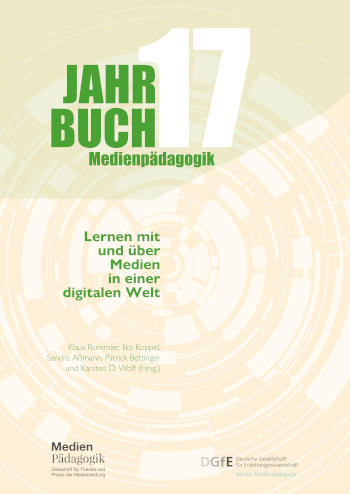Abstract
Die fortschreitende Digitalisierung in der Hochschullehre bietet Lehrenden und Bildungsforschenden bei der Gestaltung von didaktischen Konzepten und Lernumgebungen gleichermassen neue Möglichkeiten wie auch Herausforderungen. In den Ingenieurwissenschaften stehen dabei Labore als Orte des Experimentierens, Kollaborierens und Erprobens praktischer Fähigkeiten, im Rahmen hybrider Lernräume, im Fokus des Projekts «Open Digital Lab 4 You». Dieses BMBF-geförderte Verbundprojekt folgt einem Design-Based Research-Ansatz und verknüpft im Kontext der Entwicklung einer hybriden Lehr-Lern-Umgebung Forschungsfragen aus dem Bereich der Pädagogik und Didaktik mit technischen Forschungsfragen. Daraus ergeben sich eine Reihe spezifischer Herausforderungen: der Mangel an sozialer Präsenz, die Einstellung und Akzeptanz zu den Technologien und die Vor- und Nachteile von Mixed-Reality. Dabei spielen die Nutzervoraussetzungen und die darauf basierenden Entscheidungen, wie sie durch das Berliner Modell formuliert werden, bei der Entwicklung einer Lernumgebung eine grosse Rolle. Der vorliegende Artikel soll dazu einen Überblick über das Projekt, einen Auszug aus den theoretischen Grundlagen geben und ein Bewusstsein für die genannten Herausforderungen schaffen, damit diese bei der Planung von ähnlichen Vorhaben berücksichtigt werden können.
Literatur
Abulrub, Abdul-Hadi Ghazi, Alex Attridge, und Mark A. Williams. 2011. «Virtual Reality in Engineering Education: The Future of Creative Learning.» Int. J. Emerg. Technol. Learn. 6 (4). https://doi.org/10.3991/ijet.v6i4.1766.
Adl-Amini, Bijan, und Rudolf Künzli, Hrsg. 1981. Ddaktische Modelle und Unterrichtsplanung. [2. Aufl.]. Juventa-Paperback. München: Juventa.
Ambrose, Stephen E. 1999. Duty, honor, country: A history of West Point / Stephen E. Ambrose. Baltimore, London: Johns Hopkins University Press.
Billinghurst, Mark, Adrian Clark, und Gun Lee. 2015. «A Survey of Augmented Reality.» FNT in Human–Computer Interaction 8 (2-3): 73–272. https://doi.org/10.1561/1100000049.
May, Michael, Karen Skriver, und Gert Dandanell. «Technical and didactic problems of virtual lab exercises in biochemistry and biotechnology education.» In 41th SEFI Conference. Bd. 16, 20. https://www.sefi.be/wp-content/uploads/2017/10/18.pdf.
Davis, Fred D. 1985. «A Technology Acceptance Model for Empirically Testing New End-User Information Systems: Theory and results.» Doctoral dissertation.
Deci, Edward L., und Richard M. Ryan. 2008. «Self-determination theory: A macrotheory of human motivation, development, and health.» Canadian Psychology/Psychologie canadienne 49 (3): 182–85. https://doi.org/10.1037/a0012801.
Dennis, A. R., und J. S. Valacich. 1999. «Rethinking media richness: towards a theory of media synchronicity.» In Proceedings of the 32nd Annual Hawaii International Conference on Systems Sciences. 1999. HICSS-32. Abstracts and CD-ROM of Full Papers, 10: IEEE Comput. Soc.
Feisel, Lyle d., und Albert J. Rosa. 2005. «The Role of the Laboratory in Undergraduate Engineering Education.» Journal of Engineering Education 94 (1): 121–30. https://doi.org/10.1002/j.2168-9830.2005.tb00833.x.
Ginner, Michael. 2018. Akzeptanz von digitalen Zahlungsdienstleistungen. Wiesbaden: Springer Fachmedien Wiesbaden.
Grodotzki, Joshua, Tobias R. Ortelt, und A. Erman Tekkaya. 2018. «Remote and Virtual Labs for Engineering Education 4.0.» Procedia Manufacturing 26:1349–60. https://doi.org/10.1016/j.promfg.2018.07.126.
Hecker, Falk. 1997. Die Akzeptanz und Durchsetzung von Systemtechnologien: Marktbearbeitung und Diffusion am Beispiel der Verkehrstelematik. Saarbrücken: [s.n.].
Heimann, Paul, Gunter Otto, und Wolfgang Schulz. 1977. Unterricht: Analyse und Planung. 9., unveränd. Aufl. Auswahl Reihe B 1/2. Hannover: Schroedel.
Hodge, Hess, H. Scott Hinton und Michael Lightner. 2001. «Virtual Circuit Laboratory.» Journal of Engineering Education 90 (4): 507–11. https://doi.org/10.1002/j.2168-9830.2001.tb00632.x.
Kerres, Michael. 2018. Mediendidaktik: Konzeption und Entwicklung digitaler Lernangebote. Fifth edition. De Gruyter Studium. Boston, Massachusetts: Walter de Gruyter GmbH.
Le Chenechal, Morgan, Thierry Duval, Valerie Gouranton, Jerome Royan, und Bruno Arnaldi. «Vishnu: Virtual Immersive Support for HelpiNg Users an Interaction Paradigm for Collaborative Remote Guiding in Mixed Reality.» In 2016 IEEE Third VR International 2016, 9-12. http://ieeexplore.ieee.org/document/7563559/.
Limbu, Bibeg Hang, Halszka Jarodzka, Roland Klemke, und Marcus Specht. 2018. «Using sensors and augmented reality to train apprentices using recorded expert performance: A systematic literature review.» Educational Research Review 25:1–22. https://doi.org/10.1016/j.edurev.2018.07.001.
Long, Phillip. 2011. Proceedings of the 1st International Conference on Learning Analytics and Knowledge. New York, NY: ACM. http://dl.acm.org/citation.cfm?id=2090116.
McKenney, Susan, und Thomas C. Reeves. 2014. «Educational Design Research.» In Handbook of research on educational communications and technology. Bd. 13, hrsg. von J. M. Spector. Fourth edition, 131–40. New York: Springer.
Milgram, Paul, und Fumio Kishino. 1994. «A Taxonomy of Mixed Reality Visual Displays.» IEICE Trans. Information Systems vol. E77-D, no. 12: 1321–29. http://www.alice.id.tue.nl/references/milgram-kishino-1994.pdf.
Peterßen, Wilhelm H. 2000. Handbuch Unterrichtsplanung: Grundfragen, Modelle, Stufen, Dimensionen. 9., aktualisierte und überarbeitete Auflage. München: Oldenbourg.
Rogers, Everett M. 2003. Diffusion of Innovations. 5th ed. Riverside: Free Press.
Short, John, Ederyn Williams und Bruce Christie. 1976. The social psychology of telecommunications. London: Wiley.
Svajger, J., und V. Valencic. 2003. «Discovering electricity by computer-based experiments.» IEEE Trans. Educ. 46 (4): 502–7. https://doi.org/10.1109/TE.2003.817615.
Tu, Chih-Hsiung. 2000. «On-line learning migration: From social learning theory to social presence theory in a CMC environment.» J. Network and Computer Applications 23:27–37. https://doi.org/10.1006/jnca.1999.0099.
Tu, Chih-Hsiung, und Marina McIsaac. 2002. «The Relationship of Social Presence and Interaction in Online Classes.» American Journal of Distance Education 16 (3): 131–50. https://doi.org/10.1207/S15389286AJDE1603_2.
Venkatesh, Morris, und Davis. 2003. «User Acceptance of Information Technology: Toward a Unified View.» MIS Quarterly 27 (3): 425. https://doi.org/10.2307/30036540.
«World‘s Oldest Laboratory?». 1990. Anal. Chem. 62 (13): 701A-701A. https://doi.org/10.1021/ac00212a716.
Yanovich, Einat, und Omri Ronen. 2015. «The Use of Virtual Reality in Motor Learning: A Multiple Pilot Study Review.» APE 05 (03): 188–93. https://doi.org/10.4236/ape.2015.53023.
Zubía, Javier G., und Gustavo R. Alves. 2012. Using remote labs in education: Two little ducks in remote experimentation: Publicaciones De La Unive.

